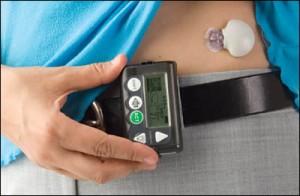Diabetes Patches for Continuous Blood Glucose Monitoring
Managing diabetes can be challenging largely because you not only have to watch what you eat but also keep track of your blood sugar levels. People who need insulin have to stick their fingers and give themselves shots several times each day. However, thanks to technology, diabetic patches for continuous blood glucose monitoring can make it more convenient and easier to live with diabetes.
Continuous glucose monitoring (CGM) systems offer a significant advantage for people with diabetes, compared to traditional blood glucose monitoring methods. The CGM system is a device that measures blood sugar levels continuously throughout the day, typically every 5-10 minutes, providing a more detailed view of a person’s glucose levels over time.
Are diabetic patches reliable?
Not all of these diabetic patches have been approved by the FDA (Food and Drug Administration). Reliable patches that have been approved by the FDA are designed to closely monitor blood glucose levels. Therefore, diabetic patches are not just fancy patches or stickers. They are an integral part of diabetes management. They have been tested and approved by the FDA to make sure they are safe.
However, some nonprescription “diabetic patches” sold at some online drug stores are very different. They claim to treat diabetes symptoms with herbs that are delivered through the skin. There’s no scientific evidence that they actually work. In fact, there is insufficient research on them.
Continuous blood glucose monitoring systems.
When you buy through links on our website, we may earn a small commission at no cost to you. Thanks for your support 🙂
With these systems, people living with diabetes stick a sensor on their skin. Then they use devices that work with the sensors.

Most continuous glucose monitoring systems (CGMs) report blood glucose levels every 5 minutes amounting to a total of 288 blood sugar readings a day. CGMs are designed to help you make informed decisions about various aspects of the condition such as exercise and food choices. They alleviate the guesswork surrounding daily blood sugar fluctuations and patterns.
How does it work?
Most continuous glucose monitoring systems consist of 3 main parts:
- Sensor wire
This is a tiny wire that is inserted just under the skin, usually on the abdomen or arm. The sensor wire uses an applicator to measure interstitial glucose levels automatically, rather than measuring glucose found in the blood from your veins. An adhesive patch holds the patch firmly in place.
- Transmitter
The transmitter is attached to the wire sensor. It sends blood glucose data to the receiver every few minutes. The transmitter uses wireless technology to send data to the receiver.
- Receiver
The receiver displays blood glucose levels, patterns, and trends.
Other devices include cloud-based reporting systems that transmit glucose information via the cloud to up to 5 selected recipients, such as a medical provider, caregiver, or parent.
Moreover, this allows doctors to easily access the information, hence facilitating the tracking of trends and displaying patterns in graphical form for analysis.
Some devices also allow users to input information about snacks, meals, physical activity, and medication to further help with the analysis and tracking of blood glucose trends.
Pros
Here are some benefits of using a CGM system for people with diabetes:
- Improved quality of life: CGM systems reduce the need for fingerstick tests and manual logging of glucose readings, which can be time-consuming and inconvenient. CGM systems also provide individuals with more flexibility in their daily activities and reduce the fear of hypoglycemia.
- Helping detect patterns and trends in glucose levels. CGMs show dips and spikes in blood sugar when is inconvenient to check blood glucose levels frequently.
- Better communication with healthcare providers: CGM systems provide healthcare providers with more comprehensive data on an individual’s glucose levels, allowing for more targeted treatment plans and better overall management of diabetes.
- CGMs help clarify the effects of exercise and diet on blood glucose levels.
- Early detection of high and low blood sugar: CGM allows individuals to detect high or low blood sugar levels earlier than traditional monitoring methods, which can help prevent serious complications such as hypoglycemia and hyperglycemia.
- Most importantly, CGMs help to enhance security and confidence by helping you understand your diabetes better. It can give you more confidence in the way you manage your diabetes and help you achieve tangible results.
- It is also comforting to get a clear picture of how your glucose levels are trending. This allows you to go for gym sessions or walks without fearing spikes or dips and to reach both your diabetes and fitness health goals efficiently.
Cons
Despite the advantages, CGMs also have their limitations that should be taken into consideration:
- Although continuous glucose monitoring systems deliver readings automatically, twice-daily finger sticks are necessary to calibrate the device for accuracy.
- CGMs often display lower blood sugar readings compared to intravenous blood sugar.
- CGM devices are expensive and require a prescription to get one.
Who should use continuous glucose monitoring systems?
According to the Endocrine Society Guidelines, CGMs should be used by type 1 diabetes patients with A1C levels above 7%. It is also important to understand the technology used by CGMs to reap maximum benefits.
Intermittent use of CGMs is usually appropriate for patients with hypoglycemic unawareness (inability to identify the signs and symptoms of dips in blood glucose levels), overnight hypoglycemia, or intensive insulin therapy (tight blood sugar control). Some of the FDA-approved CGMs include Dexcom G5, Dexcom G6, Freestyle Libre, and Medtronic Guardian Connect.
The bottom line:
The continuous glucose monitoring system is a valuable tool for people with diabetes, providing real-time data that helps individuals make more informed decisions about their diabetes management, leading to better glucose control, improved quality of life, and better communication with healthcare providers.
Read about the top 5 companies developing non-invasive glucose monitors HERE!



